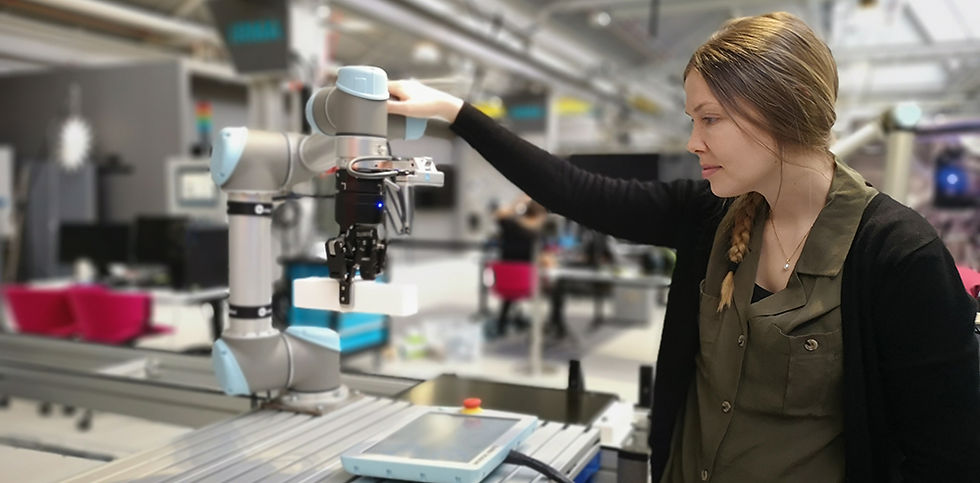How can we easier connect with collaborative robots?
- VF-KDO communication
- Mar 4, 2021
- 2 min read
This is the question My Andersson, the latest team member of VF-KDO subject area ROBOT, is researching about. When meeting her, one quickly notices that she brings a more ethical perceptive into the human-robot discussion. She, a 31-year-old Ph.D. student, is visualizing and understanding the operators hesitation. My just recently started her Ph.D. studies and is right now, like she puts it “having my face in books and publications” to really understand HRC.

My has always been interested in robots and automation, but it wasn’t until she was on the production floor that she understood how captivated she was. Always wanting to get a closer look, and a thousand questions popping up. That encouraged her to continue with her studies that lead her to the Ph.D. where she is today. She still has many questions, but there is no question about her driving force.
- I want to make sure that human-robot-collaboration works! I want the operator to feel comfortable working with a robot, a machine. What do we need to do, with the robot, and the circumstances around, for the human to trust the robot? says My.
Close cooperation with Volvo Group
To investigate these questions, My is working closely with Volvo Group. A truck assembly station has been identified as a promising case study. It involves several different tasks where the robots could potentially replace a heavy lifting, a quality inspection and also a screwdriving task.
- This station requires heavy lifting. A task that has been identified as a cause for shoulder injuries to the operator. Looking at this and the way it is set-up, I believe it will be a perfect fit for a collaborative robot, says My.
Replace the unknown with VR
Most of us are, maybe not afraid, but at least hesitant when it comes to something new. Especially when you are forced into this change. My has many ideas, one is her vision to create a workplace where VR-training is a way of preparing operators for their new colleague, the robot. A way, she believes, would help destigmatize the new relationship.
- Robots are actually quite easy to program. If we can communicate the basics and include operators in VR-training where they can contribute, I believe the operator will, little by little, feel more comfortable. Understanding is not only essential for the few behind the hands-on programming, but for everyone, says My.
Understanding tomorrow
Instead of leaving it for the few, include the mass. Is this really realistic? Befriend your robot, customize your workplace in VR and allow yourself to learn something new? Doesn’t it sound too easy? For now, we leave it to My to figure out during her time as a Ph.D. at the University of Skövde.
- The robots are here to stay, and some jobs will be gone forever. But new jobs will be created so don’t be afraid of re-skilling. A re-skilled operator of 30 years – will be highly valued, concludes My.

Comentarios